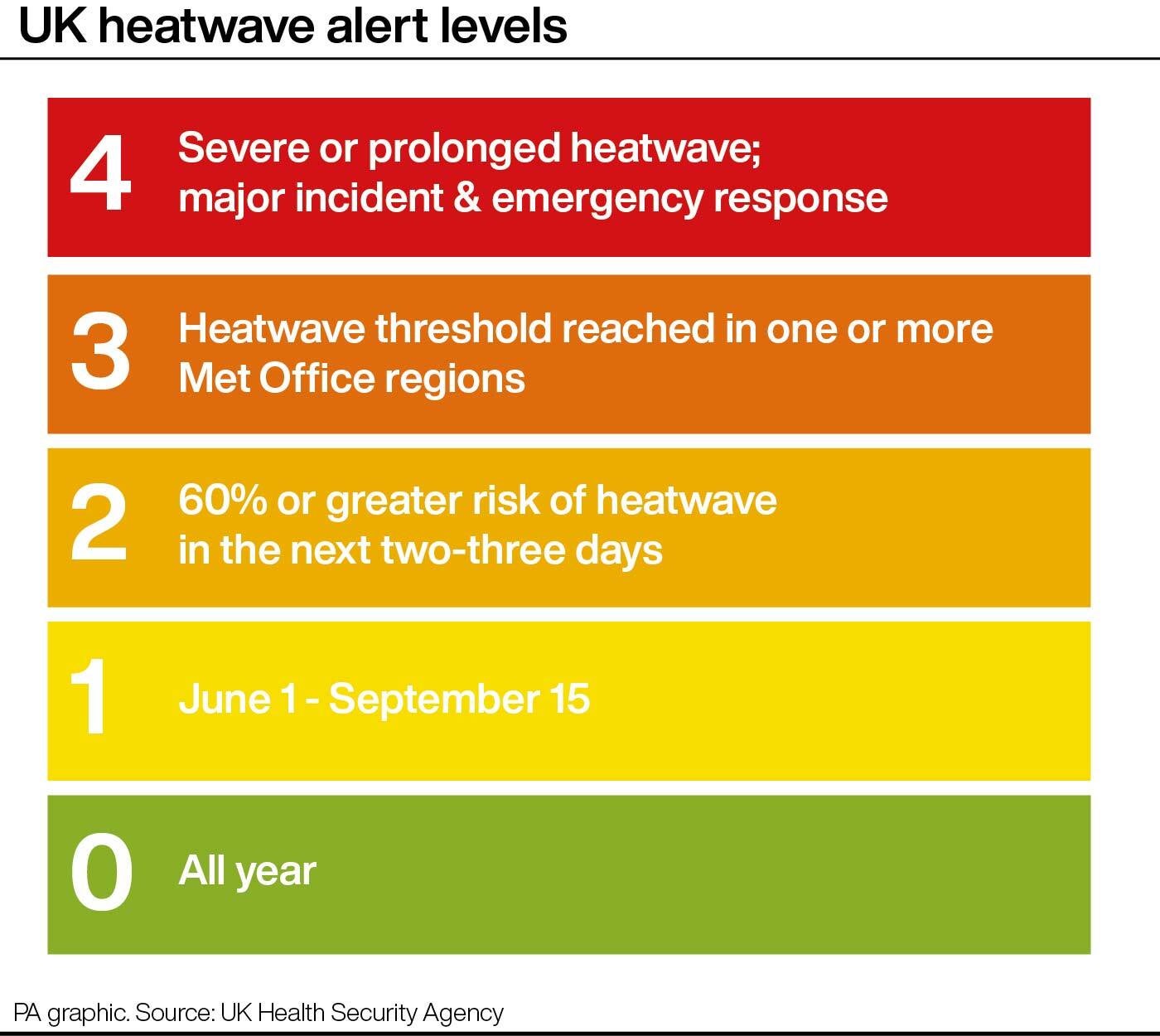What are the five heatwave alert levels and what happens when they are triggered?
Everything you need to know about the five categories

Your support helps us to tell the story
From reproductive rights to climate change to Big Tech, The Independent is on the ground when the story is developing. Whether it's investigating the financials of Elon Musk's pro-Trump PAC or producing our latest documentary, 'The A Word', which shines a light on the American women fighting for reproductive rights, we know how important it is to parse out the facts from the messaging.
At such a critical moment in US history, we need reporters on the ground. Your donation allows us to keep sending journalists to speak to both sides of the story.
The Independent is trusted by Americans across the entire political spectrum. And unlike many other quality news outlets, we choose not to lock Americans out of our reporting and analysis with paywalls. We believe quality journalism should be available to everyone, paid for by those who can afford it.
Your support makes all the difference.The UK Health Security Agency (UKHSA) has increased its heat health warning from level three to four, meaning the UK faces a “national emergency” with temperatures set to soar next week.
The government’s heat health alert system is made up of five levels.
Here is everything you need to know about the categories.
– Level zero: Long-term planning to reduce risk from heatwaves
The planning takes place year-round to reduce the harm caused by heatwaves when they arise.
This includes ensuring that urban spaces like housing, transport systems and workplaces are kept cool.
– Level one: Heatwave and summer preparedness
The minimum state of vigilance used during the summer months encourages social and healthcare services to plan closely ahead.
Services make sure preparedness work is ongoing, and the heatwave plan remains at this level between June 1 and September 15 unless a higher alert is triggered.

– Level two: Alert and readiness
This comes into force when the Met Office forecasts a 60% chance of temperatures being high enough on at least two consecutive days to have significant effects on health.
“This is an important stage to ensure readiness and swift action,” the UKHSA says.
– Level three: Heatwave action
We move into level three once the Met Office confirms threshold temperatures have been reached in any one region or more, and when specific actions targeted at high-risk groups are required.
– Level four: National emergency
Level four is reached “when a heatwave is so severe and/or prolonged that its effects extend outside the health and social care system. At this level, illness and death may occur among the fit and healthy, and not just in high-risk groups”, the UKHSA says.